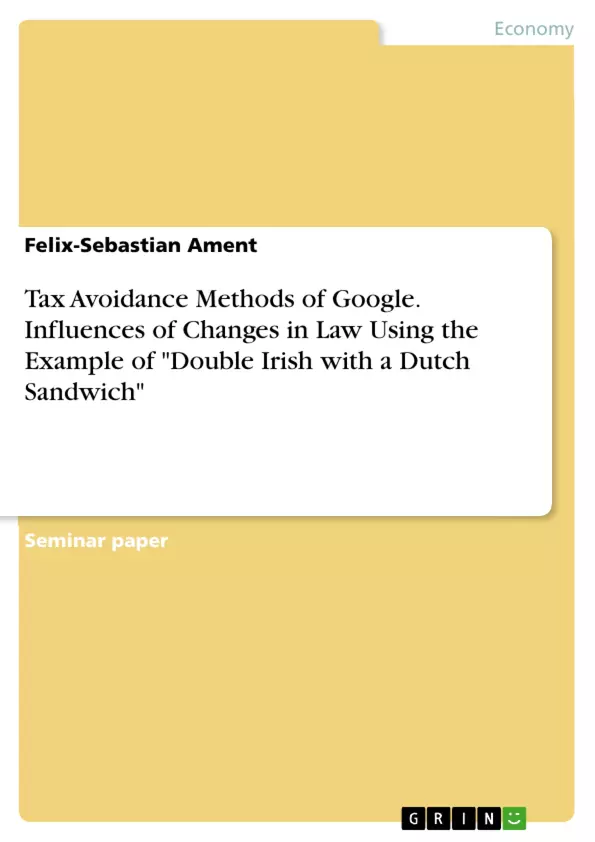Some companies generate billions of dollars in sales and yet little tax goes to the tax authorities. By using tax-saving models, companies can easily avoid high tax expenses. Researchers have found that multinational companies shift 40 percent of their profits to tax havens. As a result, hundreds of billions of euros flow past the authorities in Europe and the USA alone every year.
A certain tax-saving model has made this possible over the years. The "Double Irish with a Dutch Sandwich" favours above all the American tech companies, such as GAFA. New legislative changes are to put a stop to this from 2020. The present study shows which legal foundations have made tax avoidance in the billions possible in the first place, how corporations have taken advantage of them and what financial effects this may have on the profitability of a company. Furthermore, it is examined which consequences currently valid legal changes have within the profit and loss account of a company.
Table of Contents
- Introduction
- Research question and reflection
- Aim of the work
- The current state of research
- Structure and methodology
- Tax saving models
- Double Irish With a Dutch Sandwich
- Legislative changes
- Analysis of Google
- Application of a tax saving scheme
- Analysis and planning of P&L Statement
- Examination of the effects
- Evaluation and outlook
Objectives and Key Themes
This assignment examines the tax avoidance methods used by Google, specifically focusing on the "Double Irish with a Dutch Sandwich" scheme. It aims to analyze the influence of legislative changes on these methods and their impact on Google's financial performance and Ireland's economy.
- Tax avoidance strategies employed by multinational corporations
- The "Double Irish with a Dutch Sandwich" scheme and its operation
- Legislative changes impacting tax avoidance practices
- Analysis of Google's financial performance and its utilization of tax avoidance schemes
- The economic implications of tax avoidance for Ireland
Chapter Summaries
The introduction sets the stage for the analysis of Google's tax avoidance practices. It outlines the research question and objectives of the study. Chapter 2 delves into the existing research on tax avoidance by multinational corporations, highlighting the current state of knowledge in this field. It also outlines the structure and methodology used in this assignment. Chapter 3 examines the concept of tax saving models, with a particular focus on the "Double Irish with a Dutch Sandwich" scheme. It explores the mechanisms behind this scheme and analyzes the impact of legislative changes on its viability. Chapter 4 focuses on Google's operations and its application of tax avoidance schemes, including a detailed analysis of its financial performance and the potential implications of its tax strategies for Ireland's economy. The evaluation and outlook section concludes the study, reflecting on the findings and their implications for future research and policy development.
Keywords
This study examines the tax avoidance strategies employed by Google, focusing on the "Double Irish with a Dutch Sandwich" scheme. It analyzes the influence of legislative changes on these strategies and their impact on Google's financial performance and Ireland's economy. Key terms include tax avoidance, multinational corporations, GAFA, "Double Irish with a Dutch Sandwich", legislative changes, financial performance, and economic impact.
- Citar trabajo
- Felix-Sebastian Ament (Autor), 2020, Tax Avoidance Methods of Google. Influences of Changes in Law Using the Example of "Double Irish with a Dutch Sandwich", Múnich, GRIN Verlag, https://www.grin.com/document/916285



